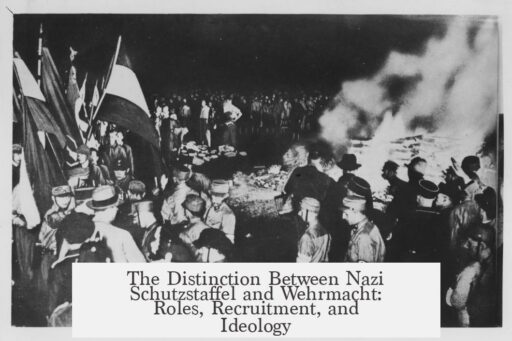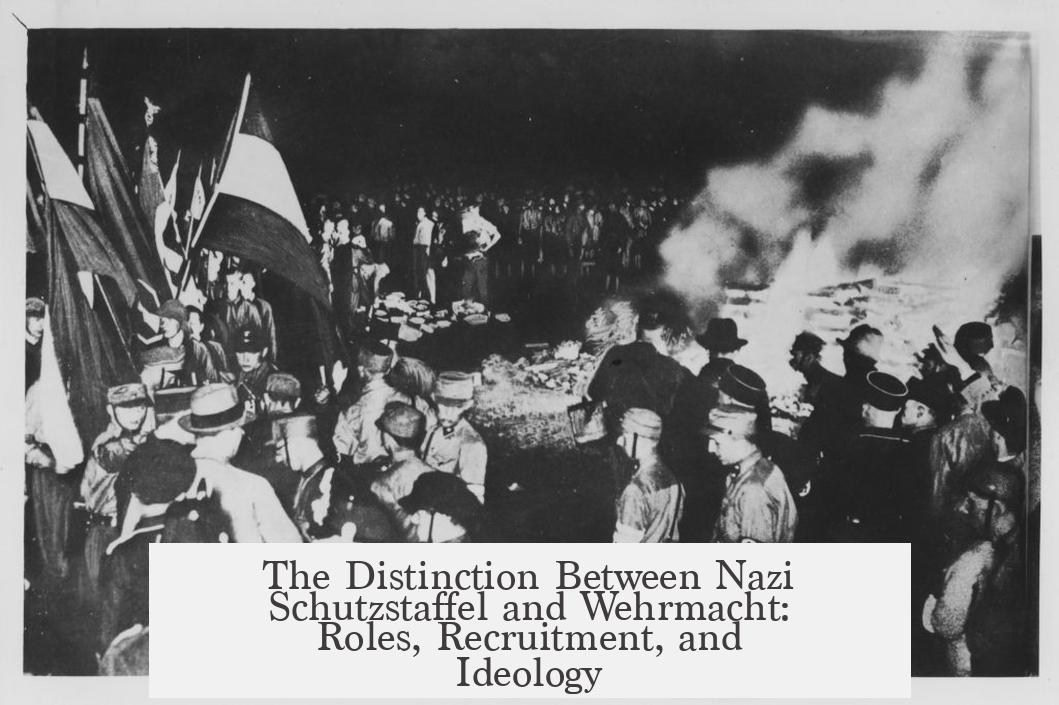The primary difference between the Nazi Schutzstaffel (SS) and the Wehrmacht lies in their organizational roles, recruitment, ideology, and operational function. The Wehrmacht was the official, regular military force of Nazi Germany, mainly composed of the Heer (army), and focused on conventional warfare as a state institution. In contrast, the SS was a Nazi Party organization divided mainly into the Allgemeine-SS and the Waffen-SS, with distinctly ideological, security, and military tasks, operating as a state-within-a-state under direct party control.
The Wehrmacht, particularly the Heer, served as Germany’s conscripted, professional military. It had a traditional military structure, recruitment based on national conscription, and access to standard weapons and training. Soldiers in the Wehrmacht were generally trained to state army standards and fought as conventional troops.
The SS, however, originated as a Nazi ideological force loyal directly to Hitler and Himmler. It split into two main parts:
- Allgemeine-SS (General SS): This component managed Himmler’s staff, internal security agencies like the Gestapo and SD, and administered concentration camps. It acted as a party security and ideological enforcement body rather than a battlefield force.
- Waffen-SS (Armed SS): Initially a volunteer military wing and Hitler’s personal guard, it operated independently from the Wehrmacht. It grew to include many divisions, some elite, some poorly equipped. Despite organizational independence, Waffen-SS units were placed under Wehrmacht High Command (OKW) tactical control during operations.
Recruitment also marked a significant difference. The Wehrmacht relied primarily on compulsory conscription among German citizens. The Waffen-SS began as a strictly voluntary force with rigorous selection reflecting its role as an ideological elite guard. Over time, especially as the war progressed, the Waffen-SS resorted to conscripting or forcibly recruiting prisoners of war and nationals from occupied countries, including foreign volunteers from places like Estonia and Latvia.
Equipment and training between the two greatly differed at the start. The Wehrmacht enjoyed priority access to military supplies, standard-issue weapons, tanks, and artillery. The SS, especially early on, had limited access to arms and inferior, hand-me-down weapons. They were even initially denied tanks and artillery. Waffen-SS units improved over time, receiving army instruction and better equipment by 1941–42. Some SS divisions during the early war years performed at elite levels, practicing advanced infantry tactics and motorized operations. However, in later war stages, many Waffen-SS units declined in quality, often focusing on anti-partisan warfare and participating in atrocities rather than effective combat.
In terms of combat effectiveness and reputation, the Wehrmacht maintained a stable record as competent, professional soldiers. The Waffen-SS displayed variable performance. Their early elite units were tactically proficient and sometimes matched Wehrmacht units, but later expansions included many poorly trained divisions. Western Allied forces mostly encountered these top Waffen-SS units, contributing to a myth of elite status. Nonetheless, Waffen-SS units were never consistently superior to the best Wehrmacht units, and their average quality decreased as the war continued.
Ideology set the two apart fundamentally. The Wehrmacht functioned primarily as Germany’s national military service, with relatively minimal ideological enforcement beyond duties as soldiers. The SS, on the other hand, was explicitly a Nazi Party institution embedded with ideological aims. It was responsible for enforcing Nazi policies, including internal security, overseeing the Final Solution, and administering concentration camps. This heavy ideological involvement made the SS a main instrument in war crimes and genocide.
Another clear distinction lies in rank and command structures. The Wehrmacht possessed a traditional military ranking system comparable to other European armies. The SS maintained a separate, distinct rank system reflecting its party affiliation. While Waffen-SS units came under Wehrmacht High Command’s operational direction in combat, their organizational hierarchy remained autonomous.
| Aspect | Wehrmacht (Heer) | Schutzstaffel (SS) |
|---|---|---|
| Role | Regular state military force | Nazi Party institution; divided into ideological Allgemeine-SS and military Waffen-SS |
| Recruitment | Conscription-based | Initially volunteer; later forced recruitment including POWs and foreign nationals |
| Equipment & Training | Standard military arms and professional training | Started with inferior gear; improved after 1940 with army instructors; variable quality overall |
| Combat Performance | Competent, broadly professional | Early elite units; mixed performance and decline in quality over time |
| Ideological Role | Minimal ideological enforcement | Core ideological enforcer; responsible for war crimes and genocide |
| Rank & Command | Traditional military ranks; under OKW | Separate rank structure; operational control by OKW but independent organization |
- The Wehrmacht served as Germany’s official conscript army with traditional military roles and moderate ideology.
- The SS acted as a Nazi Party paramilitary and policing body, enforcing ideology and state terror.
- Waffen-SS evolved from an elite volunteer guard to a larger, mixed-quality military force.
- SS units had separate ranks, command, recruitment, and were heavily involved in war crimes.
- Wehrmacht units remained more conventional and less politically driven.
What Was the Difference Between The Nazi Schutzstaffel and Wehrmacht?
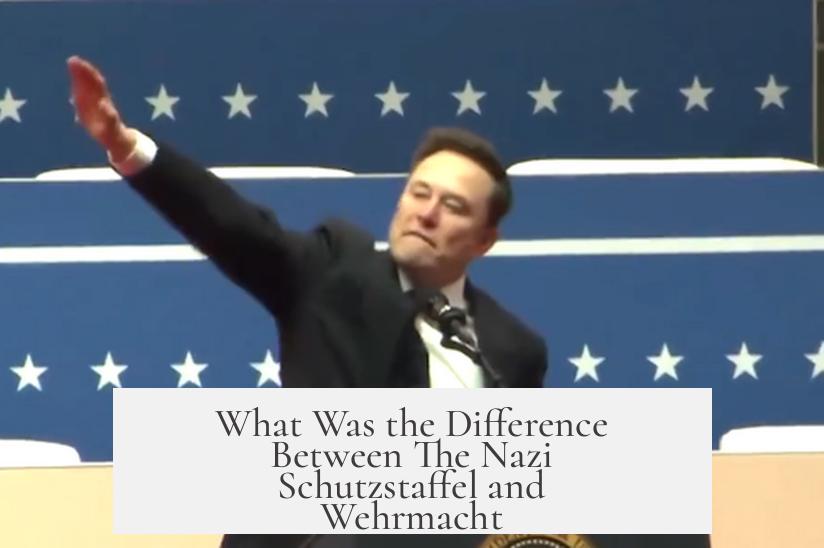
The core difference between the Nazi Schutzstaffel (SS) and the Wehrmacht lies in their fundamental roles, organizational structures, ideological motivations, and military functions. While the Wehrmacht served as Germany’s regular, conscripted military force, the SS operated as a multifaceted Nazi Party institution, encompassing both ideological enforcement and combat units independent of the Wehrmacht.
But that’s just the tip of the iceberg. Let’s dive deep into how these two notorious entities differ in structure, recruitment, equipment, combat performance, ideology, ranking, and command. Spoiler alert: it’s not as straightforward as “good army vs. bad army.”
1. A Tale of Two Organizations: Structure and Roles
Think of the Wehrmacht, particularly its Heer component, as the backbone of the German military — the professional, state-run army made up largely of conscripted soldiers. The Heer forms the conventional fighting force, trained and equipped for traditional warfare.
Now enter the Schutzstaffel (SS), a whole different beast altogether. The SS splits into two main gangs.
- Allgemeine-SS (“General SS”): This is Himmler’s brain trust. Imagine a shadowy bureaucracy running the Gestapo, concentration camps, and internal security — basically a “state within the state.”
- Waffen-SS (“Armed SS”): The combat arm of the SS, but organizationally completely independent from the Wehrmacht. These were the fighters, who initially weren’t supposed to be front-line troops but were later thrown into front-line battles under Wehrmacht tactical command.
So yes, the SS were not just soldiers; they were *political enforcers*, brutal camp guards, and hit squads—far beyond what any traditional military force would do.
2. Recruitment: Conscript Army vs. Party Volunteers (and Forced Recruits)

Here’s where it gets fascinating. The Wehrmacht relied heavily on conscription — pulling in average Germans into service. Training was rigorous, and although motivations varied, it was fundamentally a state military institution.
Meanwhile, the Waffen-SS began as an elite volunteer force handpicked for their loyalty and ideological zeal. Sounds impressive, right? Well, it’s more complicated. As the war dragged on and manpower shortages hit, the Waffen-SS started conscripting or forcibly recruiting “volunteers” from POW camps, and enemy-occupied territories like Estonia and Latvia.
Some of these so-called volunteers were at gunpoint or pressured into joining, which muddies the pure “elite volunteer” narrative for the SS, especially later in the war.
3. Equipment and Training: From Hand-Me-Downs to Elite Units… Then Not
Initially, the SS got the cold shoulder from the army. No brand-new tanks or artillery for them! They were stuck with outdated weapons—Czechoslovak rifles, old Austrian submachine guns—which might explain why their early combat performance was questionable.
But by the 1940s, things improved: SS started hiring Wehrmacht instructors and gained access to modern equipment. Elite motorized regiments in the Waffen-SS emerged, rivaling the regular army in training and firepower — particularly between 1941 and 1942.
However, this elite status was short-lived. As the war went on, many SS units turned into poorly equipped, ill-trained mobs, more interested in atrocities and anti-partisan campaigns than actual military strategy.
4. Performance and Reputation: Elite Myth vs. Hard Reality
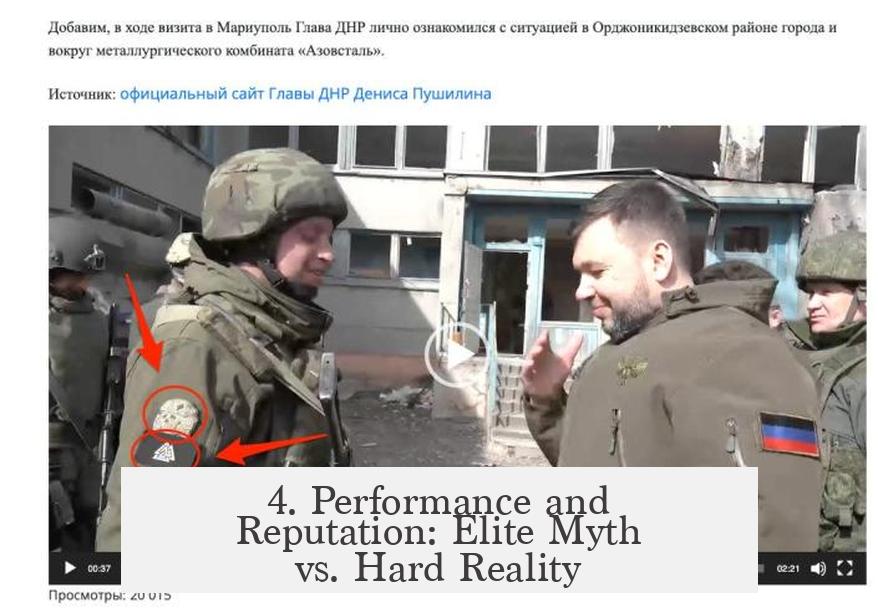
Popular culture often paints the SS as an unstoppable elite force. But during the 1939 Poland campaign, they were neither elite nor well-organized. It was only with the first five or six SS divisions between 1940 and 1942 that they earned a reputation for competence comparable to Heer units.
Still, even at their “peak,” the Waffen-SS divisions were not far superior to the best Wehrmacht units — just different in motivation and sometimes fierceness.
Later in the war, however, many Waffen-SS troops were barely trained and subordinated to filthy war crimes, weakening their battlefield effectiveness.
The Western Allies mainly encountered the top-tier SS units, which helped build the myth of an unparalleled “elite” army. Reality? More mixed.
5. Ideology and Function: Party Enforcers vs. State Military
Here lies the starkest divide. The Wehrmacht was a conventional army. Its soldiers fought for the state, less burdened with ideological fervor.
The SS, especially the Allgemeine-SS branch, was a Nazi Party institution. They served as Hitler’s ideological soldiers, carrying out “security operations,” enforcing racial policies, and orchestrating mass murder during the Holocaust.
The SS administered concentration camps — the horrifying epicenters of genocide — and enforced the “Final Solution.” Their role extended far beyond mere battlefield performance; they were the regime’s muscle for terror and political oppression.
6. Command and Rank: Separate Worlds Under One War Machine
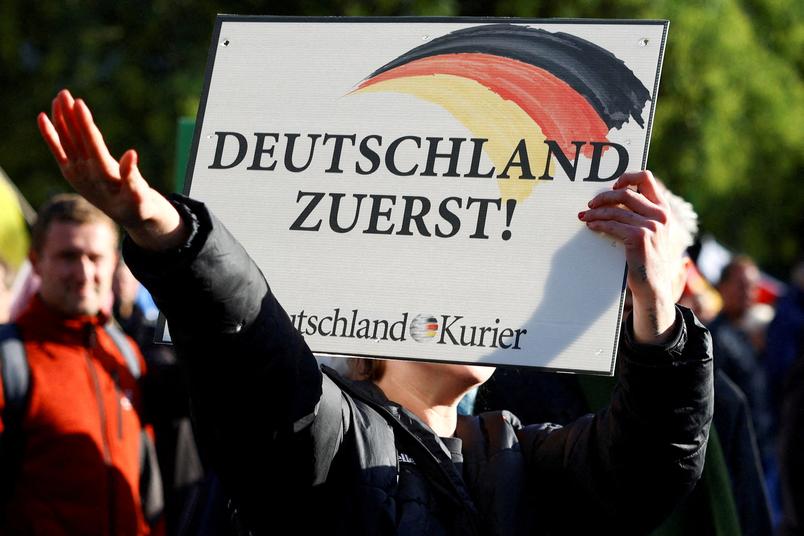
| Aspect | Wehrmacht (Heer) | Schutzstaffel (SS) |
|---|---|---|
| Rank Structure | Traditional European military ranks | Separate, unique SS ranking system |
| Command | Under the Wehrmacht’s High Command (OKW) | Operated independently but Waffen-SS was operationally controlled by OKW at tactical level |
Although Waffen-SS fought in many Wehrmacht operations, their internal chain of command stayed strictly separate, maintaining loyalty to Himmler and the Nazi Party rather than the state alone.
So What Can We Take Away from All This?
The difference between the Nazi Schutzstaffel (SS) and Wehrmacht is more than just military vs. paramilitary. It’s the line between a traditional army loyal to the state and a party-controlled force bent on ideological enforcement and terror. One fights wars; the other enforces a brutal political agenda wrapped inside a fighting force.
Understanding this helps cut through myths and focus on the complex reality during one of history’s darkest chapters. The SS was part army, part secret police, part ideological enforcer — a cocktail of violence and terror. The Wehrmacht, by contrast, was the nation’s conventional military instrument, conscripting average men to fight in a state-driven conflict.
Got any questions or need clarifications?
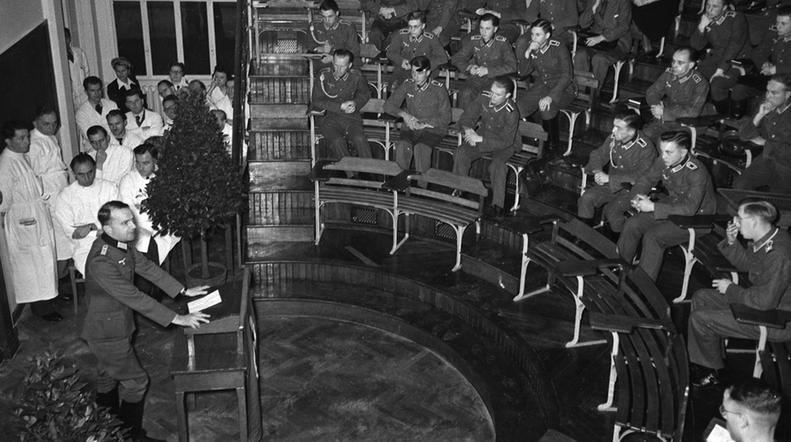
Ever wondered how the Waffen-SS managed to build that “elite” reputation despite shaky beginnings? Or why the Wehrmacht often resisted political interference from the Nazi Party? History loves complexity, so dig in and keep questioning.
Summary Table: Wehrmacht vs. Schutzstaffel at a Glance
| Aspect | Wehrmacht (Heer) | Schutzstaffel (SS) |
|---|---|---|
| Role | Regular, state military force | Nazi Party institution; split into Allgemeine-SS and Waffen-SS |
| Recruitment | Conscripted force | Volunteer initially; later forced conscripts and POWs |
| Equipment | Standard army issue | Started inferior; later comparable to Heer |
| Training | Professional, state army standards | Initially poor; improved 1940-42; declined later |
| Combat Performance | Generally competent | Mixed; early elite phase then many poor units |
| Ideology | Minimal enforcement; conventional army | Highly ideological; responsible for war crimes |
| Command/Ranks | Standard military ranks; OKW command | Separate ranks; independent but OKW tactical control |
In closing, if history were a buddy cop movie, the Wehrmacht is the conventional cop just doing their job, while the SS is the rogue, unpredictable partner with a darker agenda — sometimes helpful in a fight, but mostly dangerous to everyone involved.
